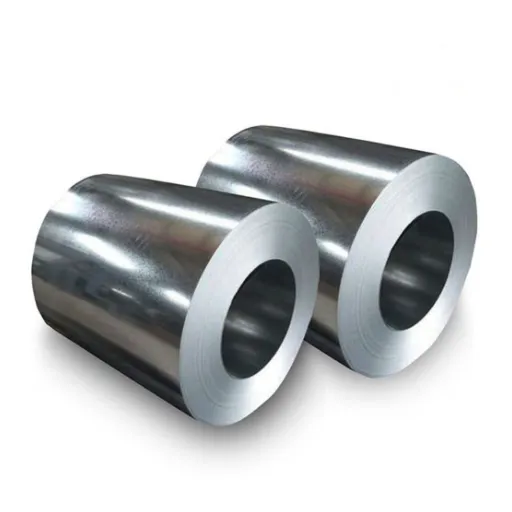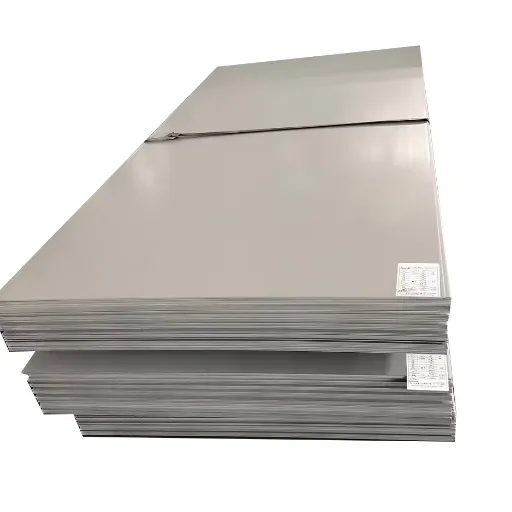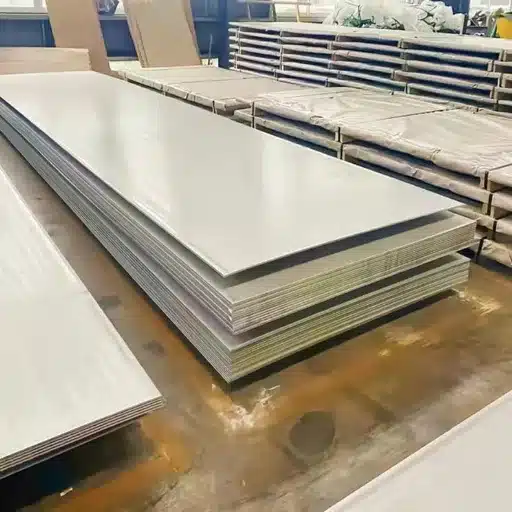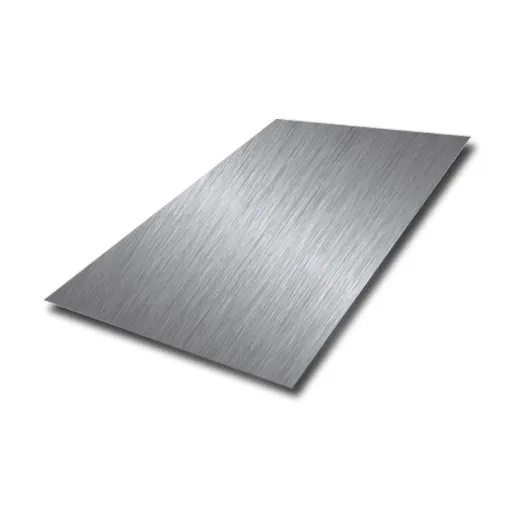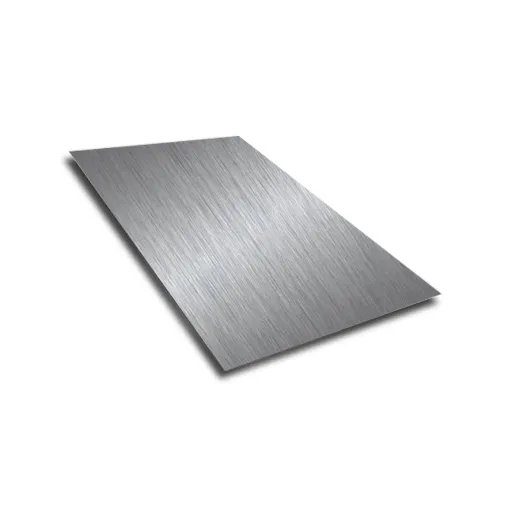Galvanized steel is one industry term that has stood the test of time, honored for capacity, corrosion resistance, and potential application in myriad fields. At the heart of this innovation lie galvanized coils-thin sheets of steel coated with zinc to increase their strength and longevity. So what constitutes manufacturing? Why do these coils find favor in construction, automotive, and whatnot? This article takes up the intriguing process of manufacturing galvanized steel and sheds light on the main advantages for which the steel finds use in so many industries. If you’re an engineer, a builder, or merely curious about how everyday items come into being, this will be the ultimate guide for you on galvanized coils.
Introduction to Galvanized Steel
What is Galvanization?
Galvanization is a process meant for protecting steel or iron from corrosion by applying a layer of zinc. This coating processes the protective barrier that obstructs moisture and oxygen from getting into it. And that greatly reduces the rusting of the steel or iron. The zinc layer offers some degree of sacrificial protection; if the layer is damaged or becomes scratched, it will corrode instead of the steel.
There are several types of galvanization procedures, but the most widely used is hot-dip galvanizing. The process is simple-the zinc is melted at a very high temperature, and in its molten form, the steel is dipped into the bath to be coated from all sides. After removal, the zinc solidifies upon cooling and makes a strong bond with the surface of the metal forming a hard protective coating. Other methods include electro-galvanization, in which zinc is electrically deposited onto the iron or steel from a solution, and continuous galvanizing that is found in fabrication processes requiring thin and uniform coatings.
Being a material that withstands adverse atmosphere, galvanized steel is employed industrywise, from construction to automotive and farming. This presence is a being really long, inexpensive to maintain, and can never require any maintenance; hence, in situations demanding durability and weather resistance, it allows for a variety of applications. Whether for roofing panels, pipelines, or automobile frames, galvanized steel ensures structural integrity and performance for long periods of time.
Types of Galvanized Steel
Among the two main types of galvanized steel, classification falls under the type of galvanization process utilized in making the steel: hot-dip galvanized steel and electro-galvanized steel. Providing a zinc coating to protect from corrosion is a common goal, but they differ in application method and finishing characteristics.
- On the Galvanized Side: To create a thick, hard coating, the steel is dipped into molten zinc. Hot-dip galvanized steel comes with a substantial corrosion resistance profile. Because of its resistance to wear-and-tear in adverse environments, it has been accepted for uses such as construction materials, outdoor structures, and industrial equipment. Thanks to its thicker coating, it offers long-term protection. Hence, it has been known to be used mainly in heavy-duty applications.
- Electro-Galvanized Steel: The electro-galvanizing process means that zinc is applied to steel by electrochemical methods with a thinner zinc layer. Thus, electro-galvanized steel has a more uniform and smooth finish, suitable for precise manufacturing requirements such as automotive parts, electronics, and appliances. Yet, this method provides less resilience to corrosion than does hot-dip galvanization, fitting cleaner applications indoors or in controlled environments.
Both types are different galvanized steels that serve different purposes depending upon what requirements the project dictates. Depending upon the required durability, exposure to environmental elements, and how the product is designed or functional, a choice is made between the two.
Overview of Galvanized Steel Coils
Galvanized steel coils are steel sheets with a zinc coating, applied by several methods of galvanizing, such as hot-dip or electro-galvanizing. This zinc coating resists corrosion and hence enhances the life of the steel, making it a widely sought material through industries. These galvanized steel coils find their niche doing construction, automobile manufacturing, and other applications wherein further durability and corrosion resistance have to be accounted for.
The biggest plus for galvanized steel coils is that they provide long-term protection from rust and environmental damage. The zinc coating prevents direct contact of moisture and air with the steel. In case the zinc coating gets scratched or damaged somewhere, it offers the second layer of protection with the zinc corroding in place of the steel underneath. This makes galvanized steel coils a boon for any kind of project, indoors or outdoors.
In choosing galvanized steel coils, one must consider characteristics such as thickness and coating weight, plus the application. Coils with thicker coatings, as well as hot-dip galvanized ones, lend themselves well to more protective applications, with good performance in outdoor locations or high-moisture places. On the other hand, environments that do not dig as harsh elements benefit from being electro-galvanized, very smooth, and capable of very tight precision. In consideration of the requirements of application, the appropriate type of galvanized steel coil may be selected.
Advantages of Galvanized Steel Coils
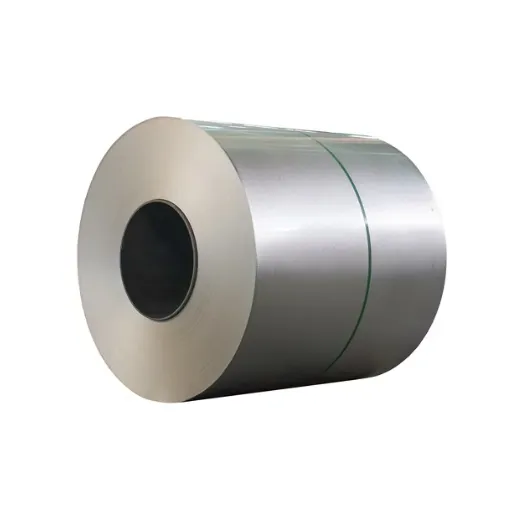
Corrosion Resistance
Galvanized steel coils are retained for their excellent resistance against corrosion, which impart durability and longevity in uses. The zinc coating, being the by-product of the galvanizing process, protects the steel from the attack of environmental elements or rust formation. Corrosion resistance benefits of galvanized steel coils are:
- Extended Lifespan: With preparation from zinc, the coating forms a barrier very much against moisture, oxygen, and other corrosive factors, thereby increasing the life of the steel against corrosion.
- Self-Healing Properties: Even when scratched or damaged, the zinc coating has the beneficial property of self-healing due to its ability to sacrifice itself for the protection of steel metals beneath the scratched surface area.
- Low Maintenance: Galvanized steel coils are further considered a low maintenance solution with fewer costs of maintenance required to keep the surfaces intact from damages and corrosion in the long period.
- Reliable Performance in Urgent Environments: These steel coils maintain structural integrity in demanding environments, be it coastal areas with high salt exposure or industrial zones with polluted atmospheres.
- Cost-Friendly Treatment: Galvanizing would have been a more cheap setup when compared to other anti-corrosion treatments and with the advantage of working better for longer.
Because it provides excellent corrosion resistance properties, galvanized steel coils are the first choice on both interior and exterior applications throughout industries.
Cost-Effectiveness
The greatest promise for galvanized steel coils somewhat lies in their cost-effectiveness. Here are five key facts and figures representing the economic advantages:
- Weaker Maintenance Requirements: Being galvanized, it needs little maintenance, compared to bare steel or that protected with other coatings. Maintenance costs translate into long-term savings, particularly in the case of large infrastructure in a given industry.
- Longer Life: Galvanizing bestows a protective coat that takes corrosion away for a handful of years, thus lessening frequent instances of replacements and thus slimming down the complete life-cycle costs.
- Lesser Upfront Investment: The process of galvanizing is cheaper than other protective measures that include painting and special coatings. It is therefore the more affordable option for tight budgets.
- Economical for Large-Scale Production: Galvanizing is a smooth, efficient procedure when done for steel coils in bulk. Scalability ensures that, in huge projects requiring untreated numbers of steel, cost-efficiency becomes a chief consideration.
- Energy-Resource Efficiency: From a very direct expensive point of view, the galvanized steel is z-service environmentally-friendly as it can be recycled without consuming too many resources throughout its lifespan. On the other hand, these reduce the indirect cost of material wastage.
Having had these risk factors sorted out, the galvanized steel coils will continue to return high investment against the backdrop of performance and durability.
Durability and Longevity
From construction purposes to the general ones, galvanized steel is famous for its unrivaled durability and longevity. This life span is granted through simultaneously acting factors, resisting wear, corrosion, and weathering. A few facts and figures about durability and longevity of galvanized steel are as follows:
- Corrosion Resistance: Zinc coating offers protection against rust and corrosion to galvanized steel. Such coatings are a set of barriers to corrosion, and such barriers cannot normally get dissolving in harsh surroundings thus giving them a far greater life span.
- Long Life: Tests have shown that the galvanized coatings generally last for about 50 years in the rural areas and 20-25 years in aggressive industrial and coastal environments.
- Healing Effect: When zinc coats the object, the tiny scratches or threatened damages could self-heal by producing zinc oxide protection layers against corrosion on the exposed places.
- Less Maintenance Neede: Galvanized steel requires almost no upkeep during its lifetime, thus reducing long-term upkeep costs with consistent quality assurance provided.
- Impact Resistance: The galvanized coating is strongly bonded to the steel surface, which makes it highly impervious to mechanical damages, abrasion, and impacts applied to it during service or transportation.
Together, these characteristics ensure that galvanized steel remains the product of choice for industries requiring low maintenance and a long life for their varied projects.
Applications of Galvanized Steel Coils
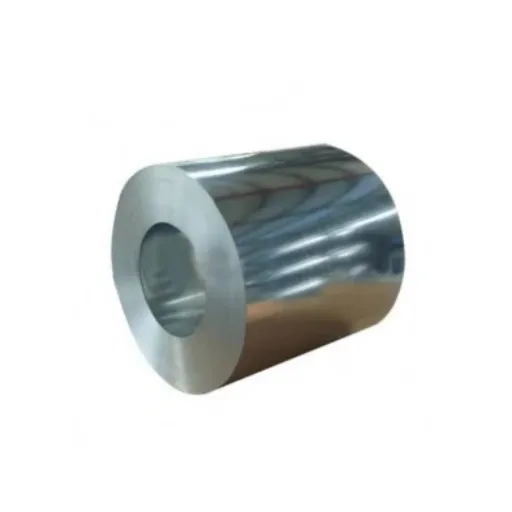
Construction and Roofing
- Roof Panels: Galvanized steel makes a perfect roofing material because it is rust-resistant and requires low upkeep to offer consistent performance for a long period.
- Wall Cladding: There are buildings with walls that are clad with galvanized steel, which gives the walls both a bit of structure and an aesthetic finish.
- Gutters and Downspouts: The material is perfect for gutters and downspouts, both in residential and commercial buildings, as it can withstand heavy rainfall and does not corrode.
- Steel Frames: Galvanized steel is used in buildings as the frame of a structure, where it is intended to give strength and resistance against environmental influences to which other construction materials may succumb.
- Fencing and Barriers: Owing to its great resistance to impact and waterproof attributes, galvanized steel is commonly used in fences and barrier works around construction sites or properties.
Automotive Industry Uses
- Vehicle body frames: Galvanized steel is very commonly used for manufacturing vehicle body frames because of durability and rust resistance, which makes an automobile last longer. Also, it lessens maintenance because it safeguards against the effects of elements.
- Exhaust systems: Exhaust systems in vehicles use galvanized steel because it can sustain high temperatures and corrosion brought about by moisture and road conditions and hence can act efficiently through the years.
- Chassis components: Important chassis components such as brackets, beams, and suspension systems are being made from galvanized steel for the added strength and increased service life. It also helps increase the total safety of the vehicle by the load it can withstand.
- Fuel tanks: Fuel tanks are often made using galvanized steel because it prevents chemical reactions with fuel that could cause leaks, thereby extending tank life.
- Wheel rims: Galvanized steel, being stronger, works for wheel rims. It gives good support and reduces the possibility of damage due to rough terrain or an accident.
Manufacturing and Fabrication
The manufacturing and fabrication of galvanized steel components involve rigorous processes designed to ensure durability, efficiency, and precision. Below are five key steps commonly used in the production and fabrication of galvanized steel products:
- Surface Preparation: The steel surfaces are meticulously cleaned through chemical treatments to remove any impurities, oil, and rust. This is an essential step to ensure proper adhesion of the zinc coating during the galvanization process.
- Hot-Dip Galvanization: The cleaned steel is immersed in molten zinc at a temperature of approximately 840°F (450°C). This process forms a metallurgical bond between the zinc and the steel, creating a robust layer of protection against corrosion.
- Post-Galvanizing Cooling: After being coated with zinc, the steel is cooled in a controlled process, either by air or water quenching. This helps harden the zinc layer and facilitates ease of handling during subsequent steps.
- Quality Inspection: Every galvanized steel product is subjected to stringent quality tests to detect, among others, uniform coating thickness, proper adhesion, and resistance to environmental influences. Inspections may sometimes be just simple visual tests, while other instances may call for using advanced tools such as coating thickness gauges.
- Custom Fabrication: Galvanized steel sheets, rods, or parts may be cut, bent, or welded into respective shapes or sizes depending on the application. American advanced fabrication methods such as CNC machining and laser cutting are employed for accurate and efficient processing.
Through the above processes, manufacturers symmetrically cultivate a galvanized steel that satisfies the extremely demanding requirements of durability and performance.
Comparative Analysis: Galvanized Steel vs. Other Steel Types
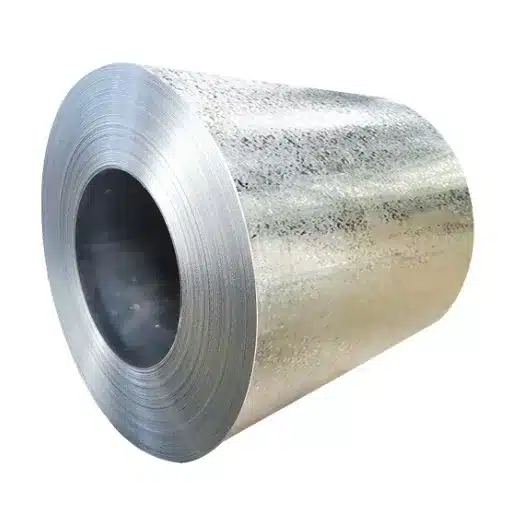
GI Coils vs. Galvanized Steel Coils
These two are usually considered the same: GI coils and galvanized steel coils. Both refer to cold-rolled steel sheets coated with a layer of zinc for protection from corrosion.
|
Key Point |
GI Coils |
Galvanized Coils |
|---|---|---|
|
Material |
Cold-rolled |
Cold-rolled |
|
Coating |
Zinc |
Zinc |
|
Corrosion |
Resistant |
Resistant |
|
Usage |
Same |
Same |
|
Process |
Identical |
Identical |
Advantages of Galvanized Steel Over Stainless Steel
- Cost-Effectiveness: Galvanized steel is usually cheaper than stainless steel because of lower production costs. While stainless steel contains a high concentration of chromium and nickel, both being expensive, galvanized steel uses a zinc coating for corrosion resistance, making it a more economical choice for many applications.
- Corrosion Resistance in Moderate Environments: Stainless steel provides very high resistance in very corrosive environments. However, galvanized steel excels in resisting corrosion in less aggressive environments. The zinc coating protects it from rusting and thus increases the lifespan of materials. This makes it ideal in general outdoor and industrial applications.
- Easy Maintenance: Galvanized steel requires less maintenance than stainless steel. The zinc coating protects it from abrasion and corrosion, which lowers the frequency of cleaning or maintenance required, particularly on construction and infrastructure projects.
- Faster Fabrication and Production: Galvanized steel requires less input, so in manufacturing, it is definitely faster to produce compared to stainless steel. This decrease in production time results in shorter lead times for projects, which leads to the needs being met in a timely manner.
- Sustainability and Recyclability:Galvanized steel is very recyclable, as both the zinc coating and steel base can be recycled. This, therefore, makes it the green option and it is very much in tune with the growing sustainability movement in modern industries. In addition to being considerate of the environment, longer service life implies less replacements, thus lessening the impact.
Environmental Considerations
Galvanized steel use is very much in tune with sustainability goals since it is recyclable and durable. Galvanized steel is perhaps the greenest building material ever since it can be recycled over and over without any deterioration in quality. During the recycling process, the zinc from the coatings that offer corrosion resistance can also be recovered and reused. Such a design helps conserve nature’s resources whilst cutting down industrial wastes. The studies have declared that the recycling percentage of steel is greater than 80% across the globe, a fact that supports its major role in lessening environmental pressure.
Galvanized steel also has a long life-span, which means less consumption of raw materials and manufacturing effort. Generally, larger projects can weather tough conditions for decades, thereby spreading out the creation and environmental impact with time. Offering the best anti-rust protection, this material reduces maintenance activity and repainting requirements, thus limiting the consumption of extra materials such as paints and solvents, which have their own detrimental effects on the environment.
In terms of environmental benefits, LCA provides another perspective supporting the use of galvanized steel. It presents the total energy needed for production-and recycling-lowering carbon footprint all along the life cycle in contrast to alternative materials, taken up for often upkeep or replacement. For long-term value and adherence to green building standards, galvanized steel often finds favor in these industries, thus moving in the direction of sustainability. Marrying utility with environmental conscience, galvanized steel embodies industrial efforts to produce eco-friendly materials.
Future Trends in Galvanized Steel Industry
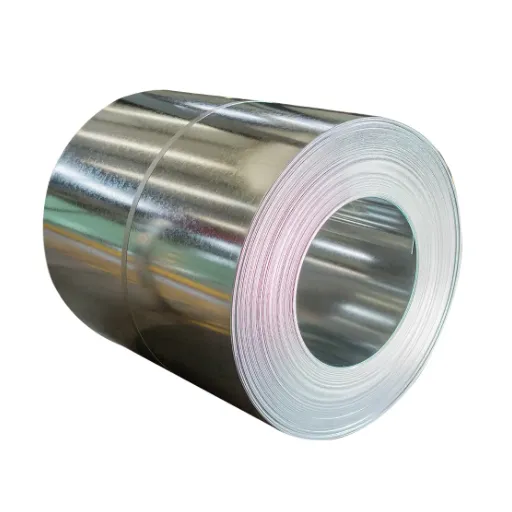
Innovations in Galvanization Techniques
In the war against time for profitable profits, the galvanized steel industry has been changing; technologies geared toward improving efficiency, quality, and sustainability are being introduced. One of the developing innovations is that of eco-friendly galvanization techniques: minimizing waste and reducing environmental damage. These methods use state-of-the-art machinery for proper application of zinc, thus optimizing the use of materials while not compromising on corrosion resistance properties.
Another trend is bringing nanotechnology to galvanization. With nano-coatings, manufacturers can make very thin but durable layers of zinc, thereby greatly extending the life and output of galvanized steel. This is certainly beneficial in resource conservation and cost minimization, hence making it most lucrative to construction and automotive industries.
Several digital methods, including AI-based quality control systems, are being introduced in the modernization of galvanizing plants. Real-time monitoring of coatings supports maintaining coating thickness, identifying defects, and smoothly operating the plants. Real-time diagnostics improve efficiency while reducing errors in execution. Thus, potential alloyed zinc coatings with aluminum and magnesium can provide better weather corrosion protection and an extended life span as compared to standard zinc coatings.
Together, these advances emphasize the movement toward environmentally apt and smarter galvanization practices that correspond to the global requirements of efficient manufacture and green materials.
Sustainable Practices in Manufacturing
Sustainable manufacturing focuses on reducing the environmental impacts while using resources efficiently to meet production demands. These include practices such as minimizing energy use by injecting renewable energy sources like solar and wind power into the manufacturing processes. Another issue is about materials efficiency; in this respect, recycling and reuse of materials, whether metals or plastics or water, come into play to prevent unnecessary waste generation.
Technological innovations in the realms of high-precision engineering and digital twin modeling allow for pinpointing inefficiency and thereby conserving resources. The circular economy concept is gaining attractions these days, wherein materials are indefinitely cycled back into the manufacturing system rather than being thrown away.
Sustainable manufacturing strategies have been said to reduce energy consumption by some 25% in some sectors across the globe, according to recent studies. These strategies further maintain economic viability to reduce carbon emissions. This is a manifestation of the burgeoning recognition for environmentally friendly operational pathways that balance the worker’s productivity with ecological responsibility.
Market Demand and Growth Projections
Increased environmental awareness and government guidelines put pressure on eco-friendly systems to cater to sustainable industrial manufacturing. The major industries, including automotive, electronics, and packaging, now conform to eco-friendly methods of manufacture in order to meet consumer demand and regulatory expectations. Hence, this conversion into sustainability has opened multibillion opportunities for those who develop renewable raw material and efficient technologies.
According to the scale of growth, sustainable manufacturing is becoming an important criterion for competitive advantage. Studies showed that industries working under sustainable technologies for manufacturing are projected to lead faster growth trends as compared to those under traditional ones. With the growing concern of carbon neutrality and circular economy, investing in clean technologies thereby has also become a tactical priority for the market to grow in this arena.
I truly think that the aforementioned trends highlight the need for sustainability to be embedded in manufacturing strategies in order to maintain the current state and efficiency in changing markets. Green practices are an element of dealing with the environment worldwide, but in the long run, they incur revenue by minimizing wastage, conserving resources, and providing a good brand image. Those companies that are able to fully emerge from such changes will garner an eventual competitor advantage.
References
-
Harvard ADS – Statistical Methods for Quality Control of Steel Coils
This study compares statistical regression models for estimating the quality of galvanized steel coils. -
University of Houston – HVAC Coils Specifications
A document detailing specifications for galvanized steel casings used in HVAC systems. -
EPA – Coil Coating Effluent Guidelines
Guidelines on coil coating processes for materials like galvanized steel, including environmental considerations. -
Texas Department of Transportation – Sampling Galvanized Metal
A procedure for sampling galvanized metal sheets or coils to ensure coating quality. -
Dayton Superior – B12 Coil Rod Specifications
Specifications for coil rods, including those made from galvanized steel, with details on dimensions and cutting methods.
Frequently Asked Questions (FAQ)
Q: What are galvanized coils?
A: Galvanized coils are rolled steel products covered with a zinc layer providing corrosion resistance. This layer offers a barrier between the steel and the environment, thus greatly enhancing the service life of the steel.
Q: How is the galvanized coil produced?
A: The production process of galvanized steel coils includes running cold rolled steel through a zinc bath. Being a hot-dip galvanizing method, the zinc coating is given a thick and durable treatment on the surface for protection against corrosion.
Q: How is hot dipped galvanized steel different from other types?
A: Hot-dipped galvanized steel is dipped in an apparatus that holds molten zinc, allowing for a thicker coating than other processes, such as electro-galvanizing, resulting in better corrosion resistance and the prolonged service life of the steel.
Q: What are some industrial applications of galvanized coils?
A: Galvanized coils find application in construction, automobile manufacturing, and several other industries. These are corrosion-resistant steel sheets employed in roofing, siding, washing machines, and many more applications.
Q: Can galvanized coils be painted or coated further?
A: Yes; thin films of various coatings and painting may be applied to galvanized coils, such as those in the prepainted galvanized steel coil (PPGI). This action gives aesthetic value to a building, for instance, and protects the steel underneath.
Q: What materials are used in the manufacturing process of galvanized steel?
A: In the primary manufacturing process of galvanized steel, the principal material is carbon steel. The steel is usually low carbon grade in keeping with the requirement of good formability and tensile strength for various applications.
Q: What is the tensile strength of galvanized steel coils?
A: The tensile strength of galvanized steel coils varies with the method of manufacture and the type of steel used. Generally, cold rolled steel offers higher tensile strength than the hot rolled one.
Q: Why corrosion resistance is important for galvanized coils?
A: Corrosion resistance to galvanized coils is very important in order to protect the steel from environmental factors leading to degradation. Either by the zinc layer or by absorption of corrosion into the zinc, the layer will serve as a barrier.
Q:What separates galvanized steel coils from any other coated steel?
A: Some major differences pertain to the coating and the production process. For instance, galvanized steel coils usually have a much thicker zinc coating than any other coated steel, thereby offering better corrosion protection.
Q: How are galvanized coils used with roofs?
A: Galvanized coils are most often used for roofing due to their strength and corrosion resistance. These coils provide a long-life solution for galvanized roofs; hence they are apt incasing buildings from the elements.

